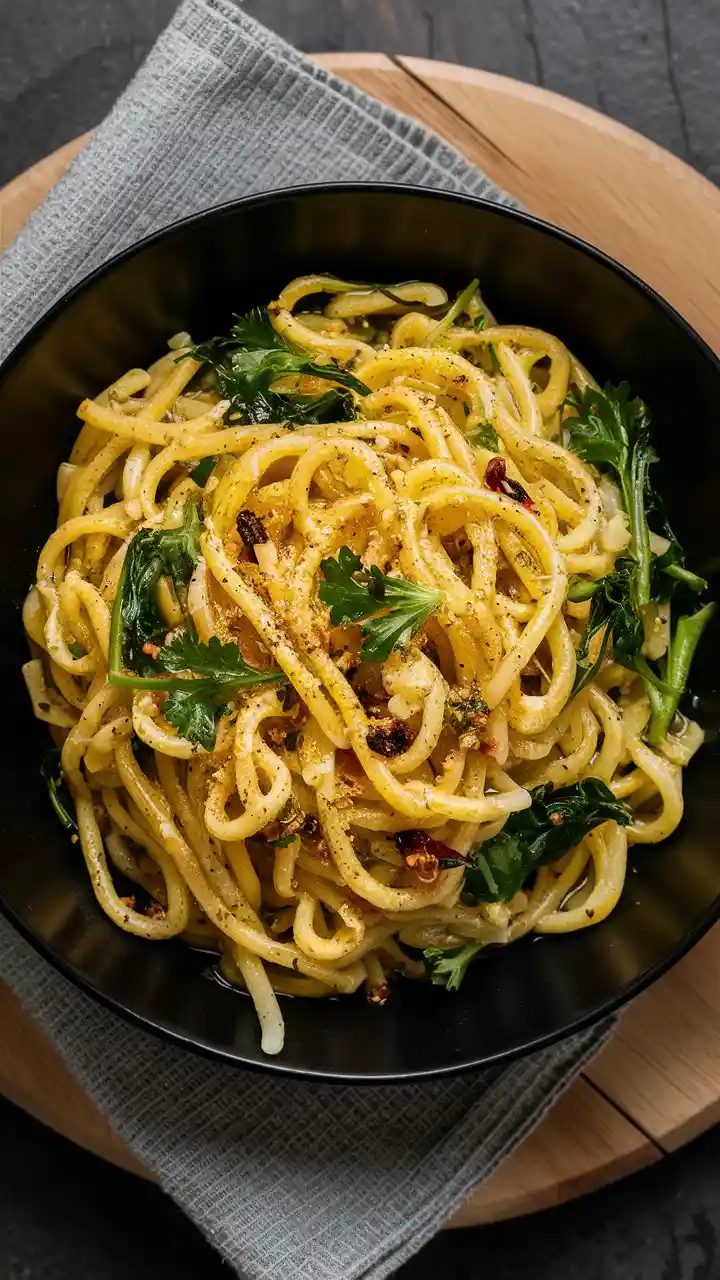By Amelia | Updated August 2025 | 0 Comments
If you ask any Italian nonna what makes pasta special, she’ll smile and say: “It’s the love in the dough.” Casarecce pasta—born in Sicily and now beloved worldwide—captures that warmth in its unique twisted shape. Unlike spaghetti or penne, casarecce has gentle curves and an open roll that makes it ideal for holding onto chunky sauces, creamy dressings, or even a drizzle of olive oil.
In this guide, we’ll dive into the history, culinary science, and traditional techniques of casarecce pasta. You’ll learn how to make it from scratch, discover expert tips, and explore perfect pairings, wine matches, and storage advice—all while keeping Nonna’s wisdom at the heart of it.
🌿 What Is Casarecce Pasta?
Casarecce (from the Italian word “casareccio” meaning homemade or rustic) is a short pasta shaped like a rolled scroll or an “S.” This design isn’t just aesthetic—it’s functional. The curves catch sauce in every bite, making it a favorite for pesto, ragù, or seafood-based dishes.
📖 A Brief History of Casarecce
- Origins: Sicily, influenced by Arab traders who introduced durum wheat.
- Tradition: Women in Sicilian households once shaped casarecce by hand using knitting needles or thin wooden dowels.
- Cultural role: Often served during Sunday gatherings, paired with tomato-based sauces and fresh herbs from the family garden.
Casarecce is more than pasta—it’s a story of family, heritage, and simplicity.
🧪 The Science Behind Perfect Pasta Dough
Durum wheat flour (semolina rimacinata) is the key to casarecce.
- Protein (12–14%) → Creates strong gluten, giving pasta its signature bite.
- Hydration (60–65%) → Ideal balance of flour to water, ensuring elasticity without stickiness.
- Resting time (30 mins) → Allows gluten to relax, making shaping easier.
🔬 Pro Tip: The rough surface of semolina absorbs sauce better than all-purpose flour pasta.
🍝 Casarecce Pasta Recipe (Homemade, Like Nonna)
Ingredients (Serves 4 | 310 kcal per serving)
- 2 cups (250 g) semolina flour + extra for dusting
- ¾ cup (180 ml) warm water
- 1 tbsp olive oil
- ½ tsp salt
Optional for serving: Fresh tomato sauce, pesto, or grated Parmesan
Step 1: Make the Dough
- On a clean work surface, form a mound of flour.
- Create a well in the center, pour in water, oil, and salt.
- Slowly incorporate flour into the liquid with your fingertips.
Step 2: Knead the Dough
- Knead for 8–10 minutes until smooth and elastic.
- Cover and rest for 30 minutes.
Step 3: Shape Casarecce
- Roll dough into long ropes (~¼ inch thick).
- Cut into 1.5-inch (4 cm) pieces.
- Roll each piece around a skewer/dowel, gently twisting.
Step 4: Cook the Pasta
- Boil salted water.
- Add pasta and cook 10–12 minutes (al dente).
Step 5: Serve
- Toss with sauce, garnish with basil or Parmesan.
- Serve immediately.
👩🍳 Nonna’s Tips for Success
- Always salt the water generously (“It should taste like the sea”).
- Don’t add oil to the cooking water—it prevents sauce from clinging.
- Save ½ cup of pasta water to emulsify sauces.
- Let shaped pasta dry slightly before boiling for better texture.
🍷 Perfect Pairings & Serving Ideas
- Classic: Tomato-basil sauce with Parmesan.
- Seafood: Casarecce with clams, shrimp, or mussels.
- Rustic: Lamb or pork ragù with fresh herbs.
- Creamy: Parmesan-basil cream sauce with cracked black pepper.
Wine Pairings:
- With tomato sauce → Nero d’Avola (red).
- With seafood → Grillo (white).
- With creamy sauce → Chardonnay.
🥖 Storage & Meal Prep
- Fresh casarecce: Refrigerate up to 2 days.
- Dried pasta: Air-dry completely, store up to 2 weeks.
- Freezing: Place shaped pasta on a tray, freeze, then store in bags (up to 2 months).
🥦 Nutrition (Per Serving)
- Calories: 310
- Protein: 10 g
- Carbs: 62 g
- Fiber: 3 g
- Fat: 1 g
- Cholesterol: 0 mg
Rich in selenium, iron, and B vitamins from durum wheat.
❓ Advanced FAQs
Q: Can I make casarecce without semolina?
Yes, but all-purpose flour produces softer, less firm pasta. Semolina is best for authentic texture.
Q: Why rest the dough?
It relaxes gluten, preventing shrinkage and making shaping easier.
Q: Can I make gluten-free casarecce?
Yes, with chickpea flour, rice flour, or gluten-free blends, but shaping is trickier.
Q: Which sauces don’t work well?
Thin, watery sauces (like light broths) don’t cling well to casarecce’s grooves.
🌟 Final Thoughts
Making casarecce at home is more than cooking—it’s preserving tradition. With just flour, water, and patience, you can bring Sicilian flavors to your table. Pair it with a glass of wine, share stories, and cook together—just like Nonna did.
Homemade casarecce isn’t perfect—it’s personal. And that’s why every bite tastes like home.

